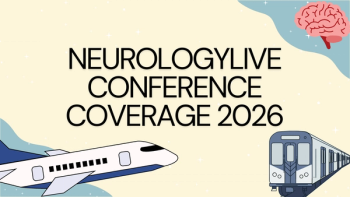
Subgroup Analyses Give Weight for Next-Level Trial of GV1001 in Progressive Supranuclear Palsy
Key Takeaways
- GV1001 showed promising results in PSP-Richardson’s syndrome, with a 95% reduction in disease progression compared to placebo.
- The phase 2a trial did not meet its primary endpoint but supports advancing to a global phase 3 trial.
Despite not meeting its primary end point, treatment with GV1001 showed more promising results in patients with progressive supranuclear palsy-Richardson’s syndrome over a 24-week treatment period.
In new data from the phase 2a PSP Clinical Trial (NCT05819658) assessing investigational GV1001 (GemVax), the agent did not meet its primary end point of change in PSP-Rating Scale vs placebo; however, it did show promising results in subgroup analyses of specific progressive supranuclear palsy (PSP) subtypes. When taking all the data into consideration, the company believes it is ready to enter a global phase 3 clinical trial for further development.1
Findings from the 24-week, randomized, double-blind, placebo-controlled, prospective clinical trial were presented at Neuro2024: The PSP and CBD International Research Symposium, in Toronto, Canada, on October 24th. After 24 weeks of treatment, patients in the GV1001 0.56 mg dose group demonstrated a 2.14-point deterioration on the PSP-Rating Scale compared with a 4.10-point change for those on placebo, representing a 48% difference reduction in disease progression. Of note, this was an exploratory study that was used to determine the optimal dosage and understand more about how the peptide works on various subgroups.
The trial, which featured 78 patients with PSP across 5 centers in Korea, randomly assigned participants to either placebo or GV1001 at doses of 0.56 mg or 1.12 mg. Patients received the drug subcutaneously once weekly for the first 4 weeks, and then at 2-week intervals for 20 weeks for a total of 24 weeks (6 months). The study included those with PSP-parkinsonian and PSP-Richardson’s syndrome (PSP-RS), which is known to have greater accumulation of tau protein and affects larger areas.
"This Phase 2a trial was an exploratory study to determine the optimal dosage and find out how the peptide works on different subgroups," Hyungsik Moon, chief scientific officer at GemVax, said in a statement.1 "Although the topline result did not achieve statistical significance, the evidence is strong enough to consider moving forward to a pivotal trial and shows potential to develop GV1001 as the world's first treatment option for PSP."
READ MORE:
PSP-RS, a subtype of PSP, comprises the majority of cases. In the study, a subgroup analysis focused on patients with PSP-RS showed that after 24 weeks of GV1001 0.56 mg treatment, those in this group had a deterioration of 0.25 points on PSP-Rating Scale total score compared with a deterioration of 5.19 points in the placebo group. This 4.94-point difference represents a 95% reduction in disease progression.
A significant proportion of PSP-RS patients in the treatment group demonstrated either symptom stabilization or improvement during the clinical trial period. When assessed as a responder rate—defined as the percentage of patients whose PSP Rating Scale scores improved or remained stable after six months of treatment compared to baseline—58.33% of patients in the GV1001 0.56 mg group showed improvement or stabilization.
"Very exciting Phase 2 level data with novel drug study with new mechanisms of action. Data is preliminary but very promising and it is in line with [GV1001] Alzheimer's disease clinical data,” Gunter Höglinger, MD, head of the department of neurology at LMU Hospital, in Munich, said in a statement.1 "I look forward to further development and very excited to participate and lead the [PSP] Phase 3 study."
Originally developed as a cancer vaccine, GV1001 is a 16-amino-acid peptide comprising a sequence from the human enzyme telomerase reverse transcriptase (TERT). It is currently being investigated in a phase 2 study in patients with Alzheimer disease (AD) that is currently slated to finish up in 2026. The multicenter, randomized, double-blind, placebo-controlled study is expected to include 180 patients with mild to moderate AD who will receive either 4 weekly subcutaneous injections of GV1001 (0.56 or 1.12 mg) or placebo, followed by biweekly injections for 1 year. The study uses change in Alzheimer’s Disease Assessment Scale-cognitive subscale, as the primary end point.2
GV1001 was also previously assessed in a phase 2, double-blind, placebo-controlled, 6-month study (NCT03184467) of patients with AD, with results published in 2021. A total of 106 patients were screened, and 96 patients with moderate-to-severe AD were randomized 1:1:1 to the placebo (group 1, n = 31), GV1001 0.56 mg (group 2, n = 33), and 1.12 mg (group 3, n = 32) groups. GV1001 was administered every week for 4 weeks (4 times), followed by every 2 weeks until week 24 (10 times).3
All told, those on GV1001 1.12 mg showed less decrease in Severe Impairment Battery (SIB) score, the primary end point, at 12 and 24 weeks compared with group 1 (P <.05). Among the secondary endpoints, only the Neuropsychiatric Inventory (NPI) score demonstrated significantly greater improvement in Group 2 compared to Group 3 at week 12. No other significant differences were observed between the groups for the secondary endpoints. While the Alzheimer's Disease Cooperative Study–Activities of Daily Living and Clinical Dementia Rating–Sum of Boxes scores showed trends similar to the SIB scores, these did not reach statistical significance.
REFERENCES
1. GemVax Announces Topline Results from Phase 2a Progressive Supranuclear Palsy Clinical Trial at Neuro2024. News release. GemVax & Kael. October 29, 2024. Accessed November 5, 2024. https://www.prnewswire.com/news-releases/gemvax-announces-topline-results-from-phase-2a-progressive-supranuclear-palsy-clinical-trial-at-neuro2024-302289880.html
2. GemVax initiates phase 2 study of GV1001 for AD in Europe. March 30, 2023. Accessed November 5, 2024. https://www.alzheimer-europe.org/news/gemvax-initiates-phase-ii-study-gv1001-ad-europe?language_content_entity=en
3. Koh SH, Kwon HS, Choi SH, et al. Efficacy and safety of GV1001 in patients with moderate-to-severe Alzheimer’s disease already receiving donepezil: a phase 2 randomized, double-blind, placebo-controlled, multicenter clinical trial. Alzheimers Research & Ther. 2021;13(66). doi:10.1186/s13195-021-00803-w
Newsletter
Keep your finger on the pulse of neurology—subscribe to NeurologyLive for expert interviews, new data, and breakthrough treatment updates.




























